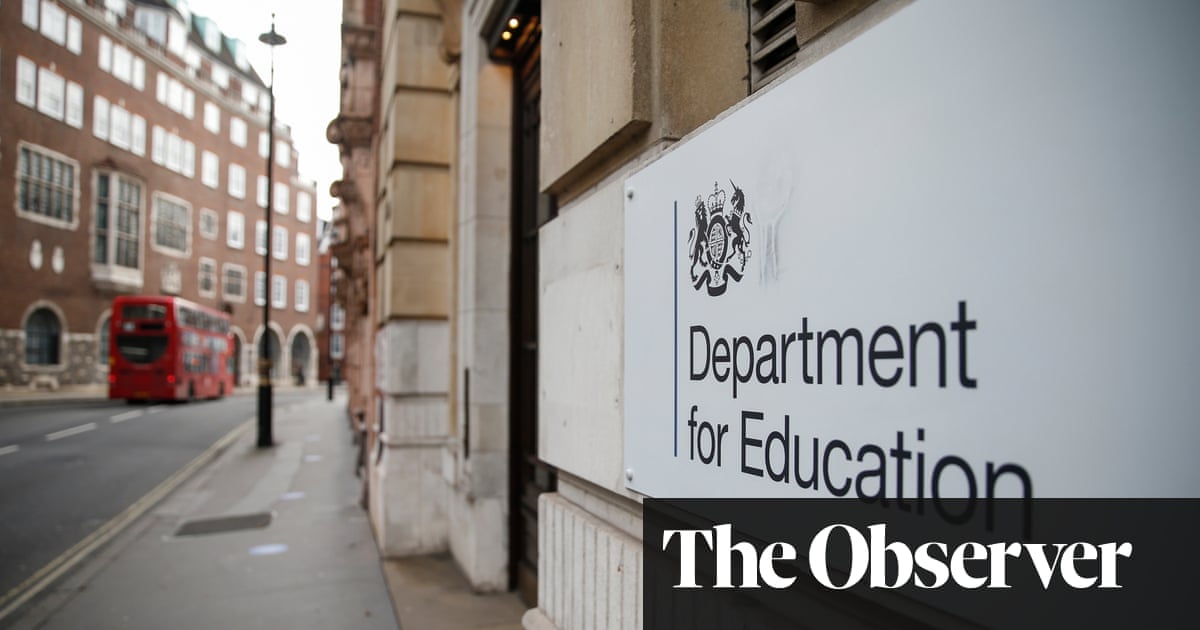
he success of any advisory group of scientists surely depends on a culture of openness, independence and diversity of opinion. Unfortunately this culture of openness has been conspicuous by its absence when it comes to the government’s Scientific Advisory Group on Emergencies. It’s only through the persistence of Guardian journalists that we can now identify 23 participants in Sage. Of these, 13 are paid government employees, working as ministerial, health or civil service advisers. As such, the presence of their bosses, Patrick Vallance and Chris Whitty, to say nothing of the prime ministers’s most senior adviser, Dominic Cummings, might well influence their ability to speak freely.
Beyond that, what does the membership of this committee actually tell us? We’ve learned from the list of attendees at a crucial Sage meeting on 23 March, leaked to the Guardian, that the group includes seven clinical academics, three microbiologists, seven modellers, two behavioural scientists with backgrounds in disasters and terrorism, one geneticist, one civil servant and two political advisers, one of which is the most powerful prime ministerial lieutenant in recent memory.
The makeup of Sage reflects an oddly skewed and overwhelmingly medical view of science. Indeed, there are many other perspectives that could bring value to a pandemic crisis team. Did Sage consult public health epidemiologists at the frontline of the response to coronavirus in China or Hong Kong, such as Prof Gabriel Leung? Did the group get input from infectious experts at the World Health Organization, such as the epidemiologist Mike Ryan, who leads the team responsible for containing of Covid-19 across the world?
The group includes no molecular virologists who could explain detailed pathogenic differences between Covid-19 and influenza, not one intensive care expert or nursing leader, and no immunologist to examine whether this virus produces lasting and protective immunity. There are no social scientists who could work on community engagement, nor a logistician, who would have expertise in planning for the delivery of supplies and resources during a pandemic. A balanced scientific advisory group would at the minimum include experts working at the frontline of the pandemic, such as those in public health, primary care and intensive care.
As to other measures of diversity, the gender balance of Sage is predictably skewed, with 16 men to seven women and only one ethnic minority person. Given that coronavirus has been shown to disproportionately affect people from black and ethnic minority communities, the comparative lack of black and ethnic minority experts seems a troubling omission.
In the absence of meeting minutes, we may never know whether, despite these deficiencies, a culture of openness exists within Sage. The lack of a paper trail also makes two of the group’s most important decisions particularly difficult to understand. At its first meeting on 28 January, Sage didn’t ask its mathematical modellers to model a community testing programme. Community testing and contact tracing reportedly wasn’t included as a possible strategy in the original modelling because not enough tests were available. The UK had been among the first countries to develop a Covid-19 test in mid-January, approved by the WHO, and has an exceptional national research infrastructure. Yet our national capacity to respond to a pandemic challenge appears to have been ignored. The basic principles of public health, and the daily mantra of the WHO – to find the virus, test, trace and isolate, to promote social distancing, and to do it all at speed – appear to have been effectively disregarded.
Whatever was discussed by Sage during February led to an alternative strategy, laid out by Boris Johnson, Vallance and Whitty at the beginning of March: to move from containing the virus to delaying its spread, allowing it to move through the population so that we eventually acquire “herd immunity” at a delayed speed.
So at a moment when the UK had fewer than 10 deaths from Covid-19 and less than 500 confirmed cases of coronavirus, the government, informed by Sage, decided to stop all community testing and tracing. The public health community were perplexed. It is difficult to think of other severe viral epidemics managed in this way, apart from influenza, which differs from coronvirus in important ways.
Six weeks later, the approach favoured by the WHO – testing, tracing and isolating the virus – is ostensibly back on the agenda. Matt Hancock has pledged that the UK will deliver 100,000 tests a day by the end of this week, with the army, Deloitte, Serco and Boots setting up test centres across the country. Health workers and their families can sign up for tests immediately. All hospital patients will be tested. Yet the government is bypassing the local authority public health teams and GPs who are at the forefront of routine screening and testing in the NHS and local communities. Its strategy still appears to be about flattening the curve, rather than finding every case of coronavirus.
Without testing, tracing those who have come into contact with infected people and isolating these clusters, the virus will flare up again. Future lockdowns will be necessary, and economic recovery extremely difficult. In a month’s time, we could be heading towards 60,000 deaths or more. It’s impossible to tell whether things would have played out differently had Sage included people from public health and primary care backgrounds. But had its membership and details of its decisions been revealed earlier, there would have been a chance for the wider scientific community to offer constructive criticism, maybe in time to save thousands of lives.
• Anthony Costello is professor of global health and sustainable development at University College London and a former director of maternal and child health at the WHO











